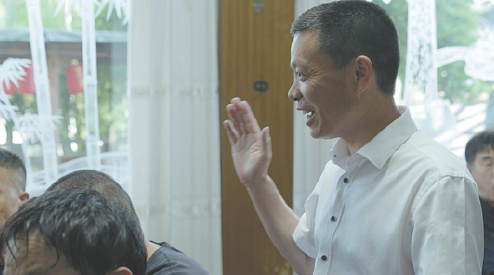

"When I embroider the tail of a fish," says Yao in the documentary, "I need to split a thread into 352 parts, and use only one of them so that the tail can become graceful and vivid just like a real fish swimming in the water. That is the extreme beauty we strive to show in Su embroidery."
"The image of a woman from the Jiangnan region became specific in my heart after I interacted with Yao," says Chen. "She seems to be gentle and calm, but her persistence with Su embroidery is firm. I can see the pure love for her cause."
Crew members spent two years walking around the lake preparing for, and filming, the documentary. "I hoped to make a documentary related to the Jiangnan region for many years, and the dream has finally come true," says Liu.
"By making this series, I gained a deeper understanding of the region, especially how it was formed with the effort of generations of local people, and my affection for the place grew even greater."
The work is a companion to The Yangtze River, another documentary which describes this mother river, from its source in Northwest China's Qinghai province to its estuary in Shanghai. The documentary has been broadcast overseas and won a prize at the Chinese American Television Festival held in Los Angeles last year.
"Ecological protection is related to the sustainable development of China," says Wang Lijun, director of the documentary center of Shanghai Media Group. "The production is the start of a series of other works related to the environment and ecology that we will promote this year."